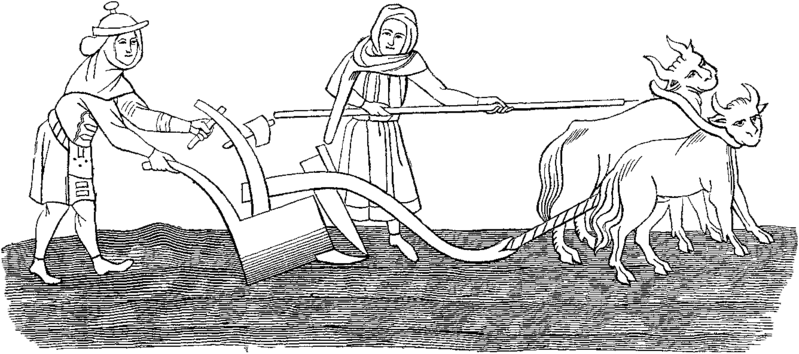A Cornish Acre is larger than an English Acre. Below are a collection of instances where a Cornish acre has been defined in the past, from 1420 to the 1800s, with writing and references from Lacy, Bishop of Exeter in 1420 to Carew in 1602, Borlase, Hals in the 1700s and Davies. They are not meant to be an absolute measure or decision on what is, or what is not a Cornish acre, but simply a collection of measurements to help you to choose and decide for yourself, or to provide a launchpad for your own investigative journalism on the subject.
Many learned people have considered the question and there is no Google calculator that will give you the true calculation. Most writers refer to Hals’ writing. Hals draws on the work of Carew, written 100 years before.
William Hals (1655–1737?), was a British historian who compiled a History of Cornwall, which he began writing in 1685, it was the first work of any magnitude that was ever printed in Cornwall. Highly educated, but local, historian, who travelled extensively across Cornwall during his lifetime; however, he didn’t publish all his notes. A few were published, his work was considered too outrageously full of personal detail, so publishers were shy of publishing more. After his death his collection of notes passed into a few hands, the Grenville Library at the British Library and the British Museum have the largest collections. Although never published in his own right, much of his work was used by other Cornish historians, including Gilbert, Tonkin, and Whitaker.
Richard Carew (17 July 1555 – 6 November 1620) was a Cornish translator and antiquary. He was a country gentleman of Cornwall who was educated at Oxford. Carew is particularly known for his Survey of Cornwall (1602).
A Cornish Acre

Ploughing a Cornish Acre
Some excerpts from books which encounter and discuss a Cornish acre:
[1] How “i acre of land” could be “the land of i curacate,” will naturally puzzle my reader to ascertain. But the passage proves an acre in Doomsday Book, occasionally to be an acre in name only, and much larger than an acre in reality …. Here, and here only, as we have the declaration no where else in Cornwall; does the record adopt the Cornish largeness of measure, for an acre. “Every ancient Cornish acre,” Hals observes in p159 is “sixty statute-acres of land.” But Carew, 36, says, “commonly thirty acres make a farthing land, nine farthings,” or two hundred and seventy statute-acres “a Cornish acre”. And “in the register of Lacy, bishop of Exeter, AD 1420, “the Cornish acre” is found far below Carew’s account, though much above Hals’s, even as it is found in Doomsday Book; appearing to have “contained four ferlings, slim farthings, each ferling consisting of thirty acres, statute-measure,” and each Cornish acre, therefore, “containing one hundred and twenty statute-acres” (Borlase’s Nat. Hist. 319),
Source: The Ancient Cathedral Of Cornwall Historically Surveyed, Volume 2, John Whittaker, 1804. Chapter VII, p256.[2] In one calculation for Maddern (p79) Davies equated 84 Cornish acres to 3600 statute acres, which is 42:1. At Manaccan (p111), a description was given of “twelve Cornish acres of land, that is to say, seven hundred and twenty statute acres”, a ratio of 60:1. In the Probus (p365) entry Davies describes land as being 6 Cornish acres, or 7 statute acres, which is almost a 1:1 ratio.
Source: Parochial History of Cornwall, pp 79 and 365[3] “Commonly thirtie Acres make a farthing land, nine farthings a Cornish Acre, and foure Cornish Acres, a Knights fee. But this rule is ouerruled to a greater or lesser quantitie, according to the fruitfulnesse, or barrennesse of the soyle.”
Source: The Survey of Cornwall, Richard Carew, 1602.
Other references will be added as I discover them.
Further Reading and Resources
- 1804: The Ancient Cathedral Of Cornwall Historically Surveyed, Volume 2, John Whittaker, 1804.
- 1838: The parochial history of Cornwall founded on the manuscript histories of Mr. Hals and Mr. Tonkin; with additions and various appendices by Davies Gilbert. Published 1838.
- 1750: Hals’s Complete History of Cornwall, Part II being the Parochial History (there was never a Part I), published in 1750 by publisher Andrew Brice. This covered the parishes, alphabetically arranged, from Advent to Helston.
- 1602: The Survey of Cornwall, Richard Carew. 3 editions – first published in 1602.
I cannot comment on references or cross references, these are simply listed here to assist people that can make use of the information, for personal study, genealogical purposes or academic requirements.
These are my personal notes, taken as I have a keen interest in the minutae and cross-referencing. Personally, I started this quest to establish the size of a virgate, as mentioned in the Domesday Book as Treninnick Manor was written as having one virgate, but investigation showed me the figures didn’t stack up.
remwbay domesday book cornwall
Images © anglo saxon ploughmen




















